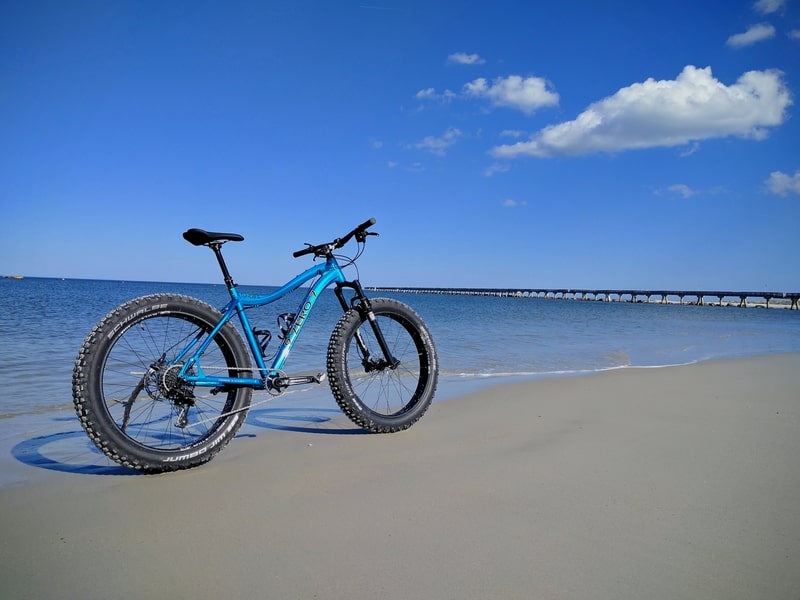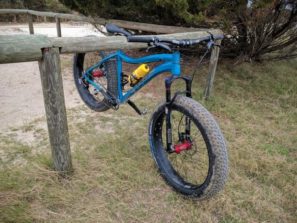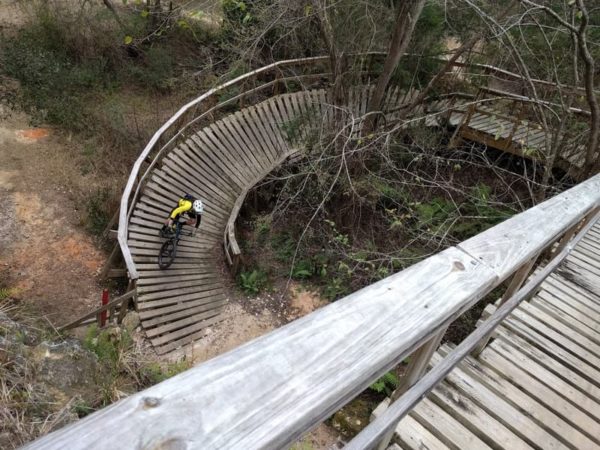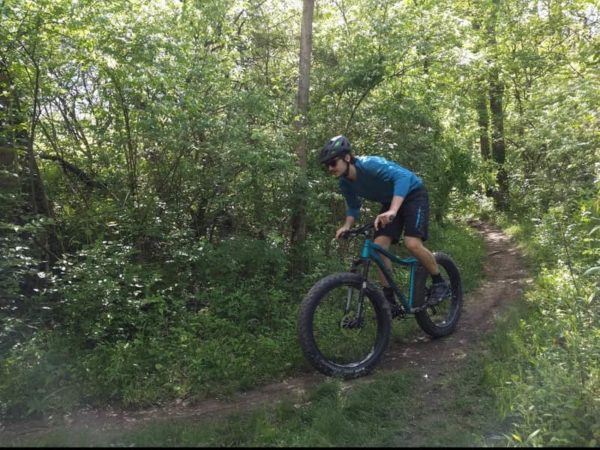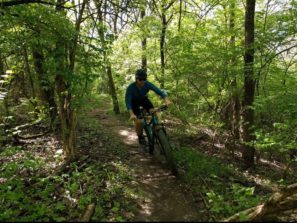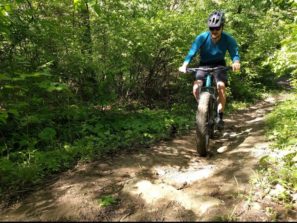January & February may have forgotten how to winter, but being able to have some fun in the sun was a great way to kick off a new year of riding. The week before receiving the Tundra from 9:zero:7, we were anxiously awaiting the weather report for the following weekend. Awful weather conditions meant there were only a few options for riding, either north to Grand Rapids, Michigan for fat biking nationals or south to Florida. Ultimately, the forecast of snow in Michigan turned to rain. So instead of peddling through muck over the long weekend, Zach and I made our way to Florida. After a short 12 hour drive we arrived on Amelia Island just north of Jacksonville…
The beach running along the Fort Clinch State Park was open for bikes. Some had their hybrids out by the surf, but only large 4″ tires could truly manage the loose sand. Even so, quicksand-ish areas would still swallow the massive tires whole. Fortunately, the bike showed its roots from Alaskan Tundra journeys by how comfortable and planted it was on both firm and soft ground.
The trail system on the island replaced climbs with pumping and weaving paths through Spanish moss-covered forests. This is where I felt the Tundra excelled, the slacker head angle, short reach, and 760 mm bars created a playful ride over rollers, banked turns, and doubles. The flow of the trail reminded me of a pump track, just a lot longer. Although we were on an island, the majority of the trails were well packed dirt with splashes of sand. Sure enough I got a little too into the trail and eventually got bucked harder than a cowboy riding a wild bull on a hot July day. Thankfully the ground was soft enough to cushion my head and shoulder during impact…
Our next stop on the trip was the Santos trail system in Ocala FL. It offered a legitimate mountain biking experience, and the perfect opportunity for Zach to test out the new Salsa Deadwood Sus and for me to convert the Tundra to 27.5 x 3.0. Within the first few miles it became obvious that the bike wasn’t designed around this platform, but it still handled the trails well enough to enjoy the experience. The conversion affected handling the most, with the smaller tires and wheels making the bike feel a bit more unstable. Despite the slight effect on handling, it still overcame jump lines, rollers, and the pump-track well enough. Skinnies were also fun and easy to manage, but that can relate to handling skills as much as it does the bike setup. The trip overall was a great success and provided a range of riding that highlighted the key benefits and disadvantages the bike had to offer. But, I had to see how it handled trails at home. (12 hours later…)
A majority of my riding took place on local trails. Clay based dirt surrounds the Ohio river valley and throughout the winter/spring conditions, they are often wet. After a few tire pressure tweaks the Tundra managed to handle wet and dry conditions pretty well. Personally weighing 185 lbs, I ran the tires around 10 psi (f) and 12 psi (r) on average trail days, and adjusted them up/down ~4 psi depending on how dry or wet the trails became. I was running around 8 psi (f &b) in sandy Florida +4 psi on their trails which was pretty spot on for the ground. I often reserved the dry days for full suspension riding, but occasionally even on good days it was fun to be monster trucking Tundra out and about. Big tires weren’t the only benefit to this bike though. There were a number of components that made this specific build great for trails.
We’ve gone over the stock build & geometry of the Tundra we received earlier this year, but it’s beneficial to highlight what stood out to me. The Bluto fork contributed a great deal to its trail performance by absorbing the shock that made it through the tires. Having a rigid front end would work well if all I rode were beaches, but because I’m far from that (literally) having the extra bit of suspension let me to push it harder in the woods. The dropper, the 760 mm bars, and 1×11 drivetrain indicate the Tundra’s trail-worthy intentions. Lastly, its 4″ Schwalbe Jumbo Jim tires had consistent control when inflated properly (I’ll take responsibility for that washout crash).
Although the $2,400 Tundra has a family lineage built on long expeditions, 9:zero:7 is close to their mark when creating this trail fat bike. As with many things there is room to improve, namely the option of an expanded size range or slightly longer reach. With just three sizes available, I was on the large. At 6’3″ the cockpit felt cramped at times on the trail, and sat me up just a bit too much. Having a slightly longer reach or an XL frame size would make it more comfortable for taller riders. Also, the chain stays are still on the longer side at 450 mm (though this is a big improvement over the 467mm chain stays of the Whiteout AL).
All in all, it’s a fun bike that checks off most of my requirements for a fat bike; wide tires, decent handling, good components, a comfortable enough setup, and above all an entertaining ride. I look forward to seeing where they go from here with their line of trail fat bikes.
